




Introduction
Memory serves as the computer's electronic storage facility for the instructions and data that it needs to access quickly. Information is kept there for quick access. A computer has an internal memory that stores data and instructions that are temporarily awaiting processing, as well as the intermediate result before it is communicated to the recipients via the Output devices.
Types of Memory
Primary Memory: It is also referred to as internal memory or main memory. It is close to the CPU on the computer motherboard, contains ROM and RAM, and allows the CPU to read data from primary memory very quickly.
Secondary Memory: It is also known as External memory or Auxiliary memory, is typically physically located within a separate storage device, such as a hard disc drive or solid state drive (SSD), that is connected to the computer system either directly or through a network.
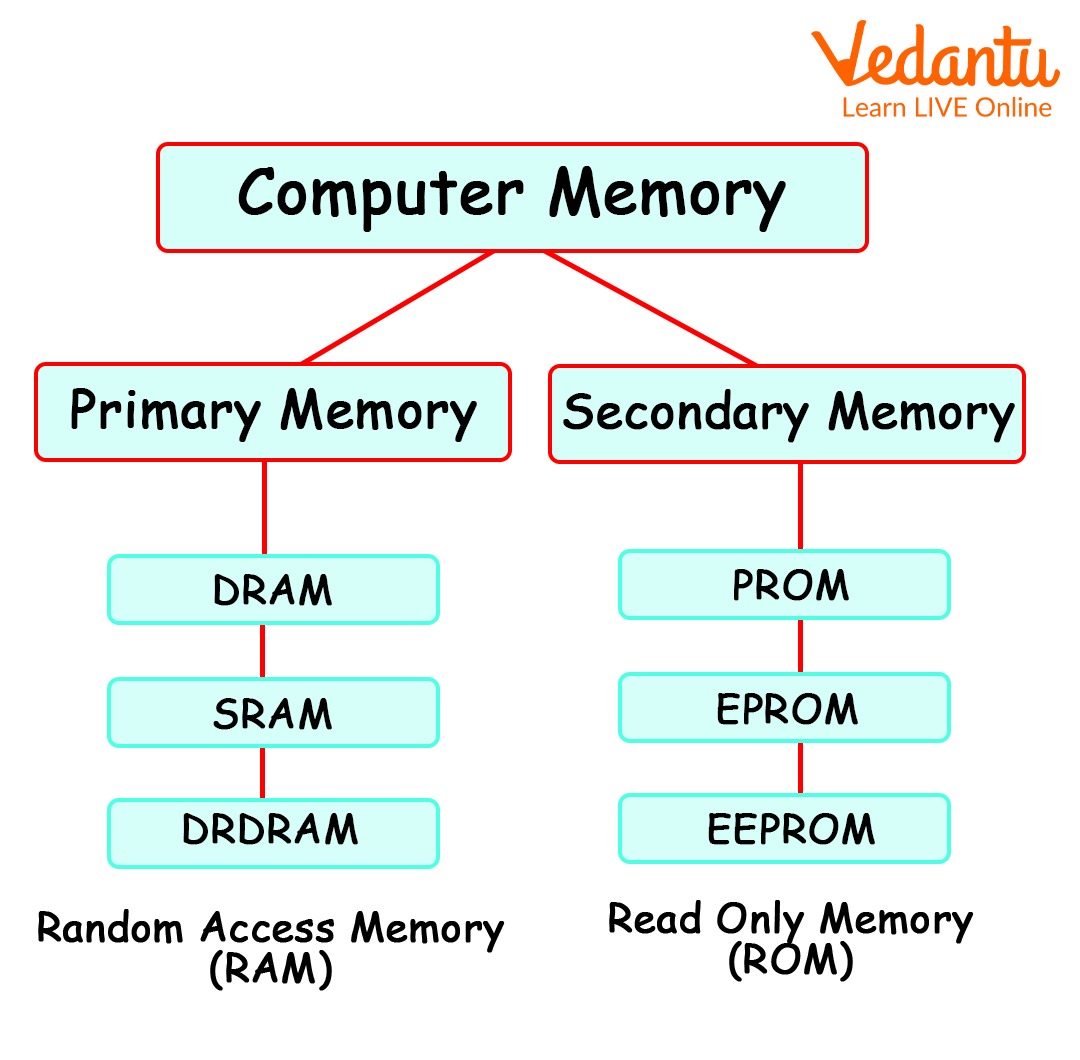
Computer Memory
Types of Memory Devices
1. Hard Disk Drives (HDD): A hard disc is a magnetic storage device that accesses data using mechanical platters and a moving read/write head. IBM introduced hard disc drives in 1956 for secondary storage in general-purpose computers.
Mostly used for storing data such as pictures, music, videos, and text documents, as well as backing up files and data.
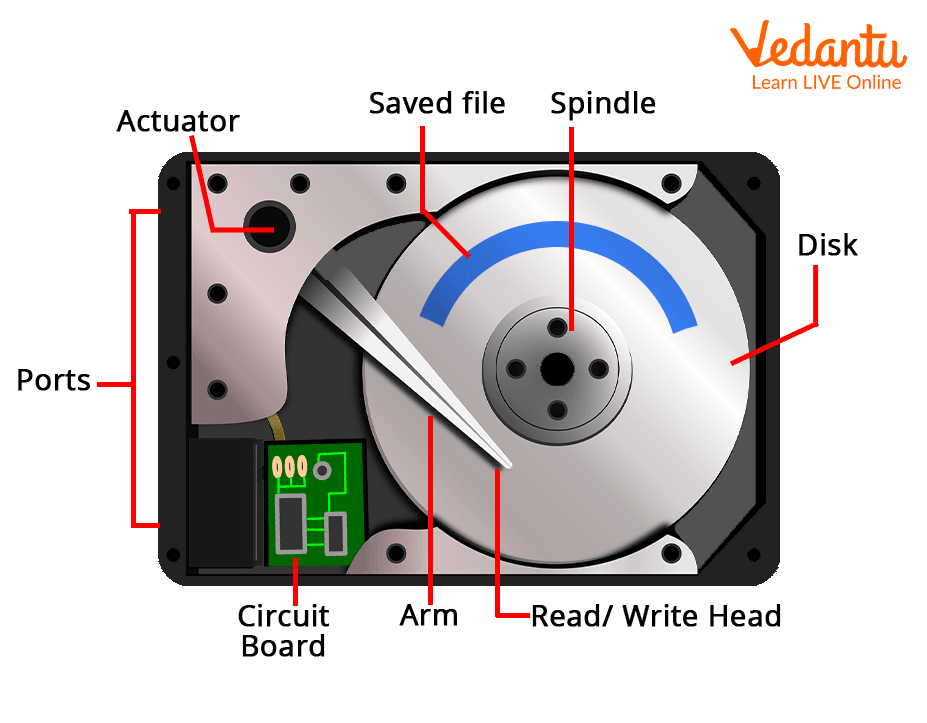
Hard Disk
2. Solid- State Drive (SDD): A solid-state drive is a non-volatile data storage device. Hard disk drives are being replaced by SSDs because they perform better.It is used by enterprise servers because of their quick read and write speeds, as well as by gaming computers and companies that handle massive amounts of data because access times are crucial.
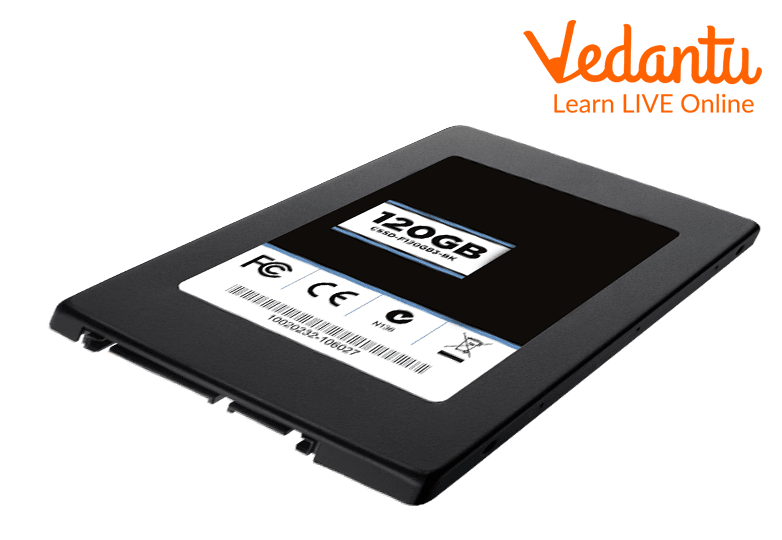
Solid-State Drive
3. SD Card: The name stands for Secure Digital Card. It is a small flash memory card that is designed to provide large amounts of memory in a small package. It is found in portable devices like mobile phones, digital cameras, audio players, etc.
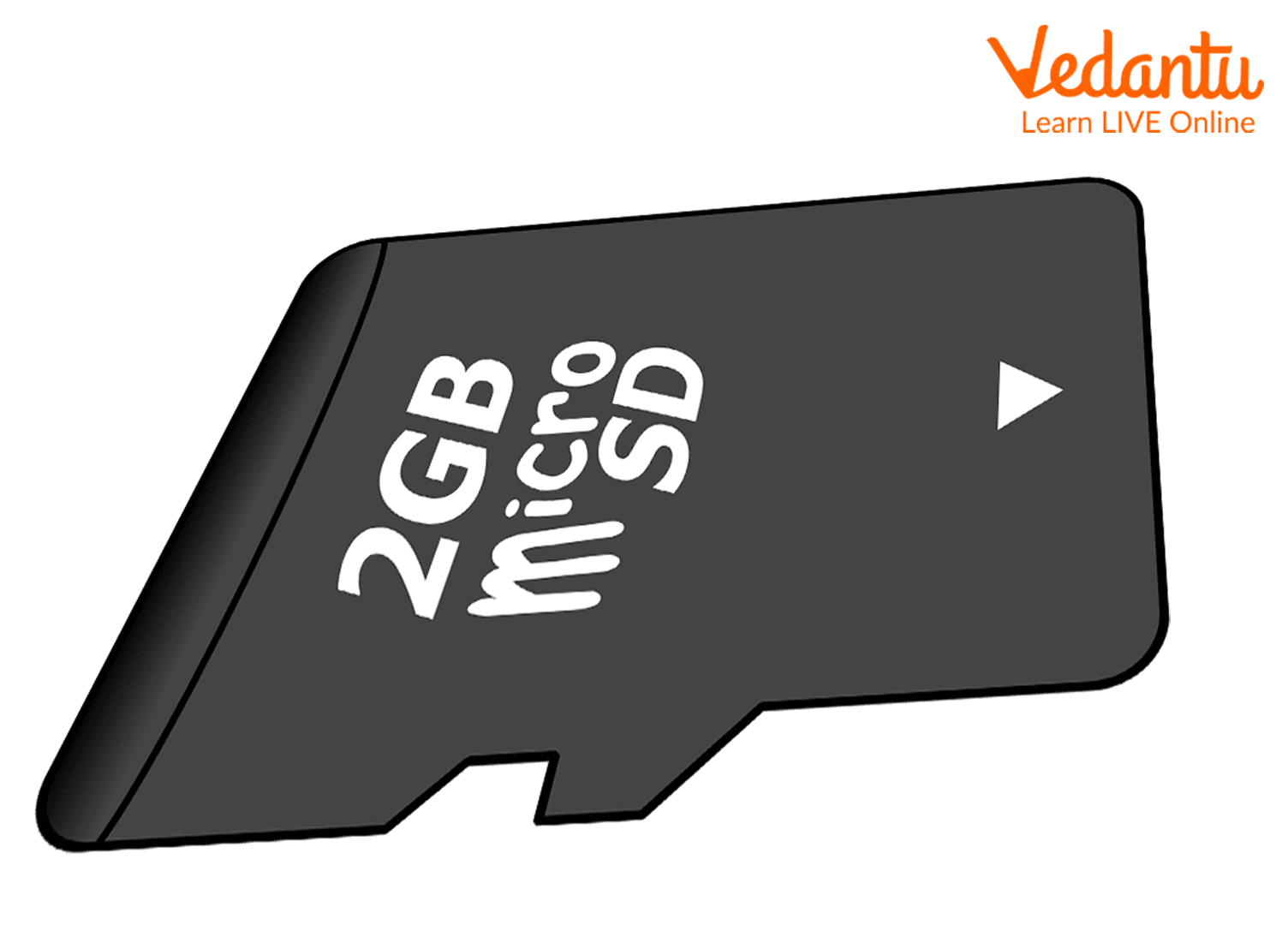
SD
Key Characteristics of Memory Devices
Location: This indicates whether the memory device is external or internal to the computer. Internal memory and external memory are not the same thing. While internal memory is directly embedded on the computer motherboard, external memory is separate from the main computer unit.
Capacity: The amount of data that a memory device can store is measured in terms of capacity. Internal memory is measured in terms of bytes, whereas external memory is measured in terms of words, with a word length of 8, 16, or 32 bits.
Unit of Transfer: It is the most bits that can be read or written into memory at the same time. It is mostly equal to word size in main memory. In the case of external memory, the unit of transfer is often larger and referred to as a block rather than a word.
Performance: It is a measure of the memory system's overall efficiency. Performance is measured using three (3) parameters.
Transfer Rate: The rate at which data is sent into and out of memory.
Memory Cycle Time: The time required to access a memory block as well as the time between the first and second accesses.
Access Time: The amount of time required to complete a read or write operation.
Access Method: The term "access methods" describes the processes used to write data to a memory device and then read it out again. The following is a list of the four access methods:
Direct Access Memory: It is also known as random access memory, refers to situations in which a system can go directly to the information desired by the user. The SSDs (solid-state drives) are an example of a memory device that uses the direct access method.
Sequential Access Method: A shared read-write mechanism is used to access data sequentially. The Magnetic tape is an example of a storage device that employs the sequential access method.
Random Access Method: Each memory block has its own distinct and physically wired-in addressing mechanism. RAM is an example of a storage device that employs the random access method.
Associative Access Method: Data is accessed by comparing the required bit location within a word based on a data element. The cache memory is an example of a storage device that is used by the associative access method.
Physical Characteristics: The physical characteristics of the memory system are as follows. This can take the following forms:
Volatile
Non-volatile
Erasable
Non-erasable
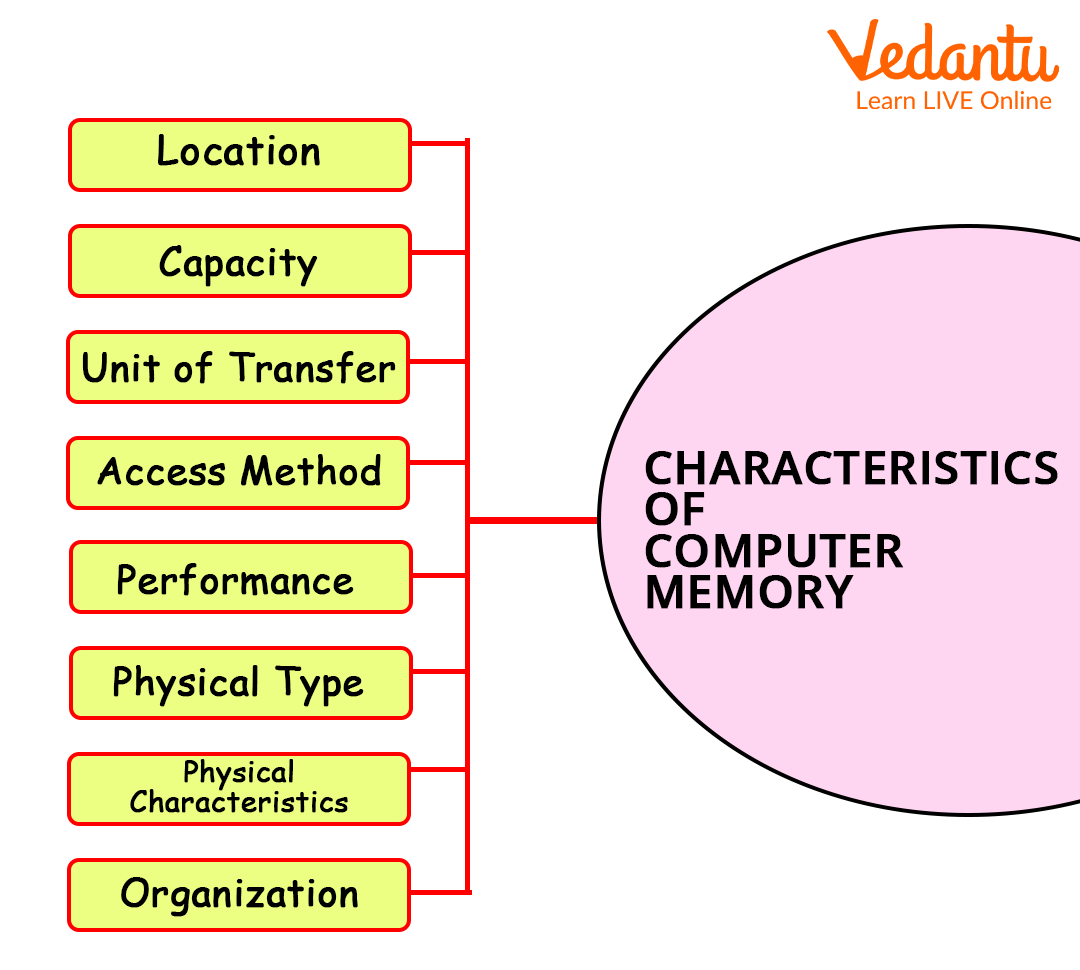
Characteristics of Memory
Characteristics of Secondary Storage Devices
Large Capacity: Secondary storage devices, such as external hard drives, can have larger memory capacities than primary memory.
Portability: Secondary storage devices are portable because they are external devices that can be connected to different computer systems.
Durable: extremely long-lasting in nature.
Non-volatile: Non-volatile memory is secondary storage.
Price: Secondary storage devices are less expensive than primary storage devices.
Facts
At the beginning of the twenty-first century, the primary memory device used for main computer storage was integrated circuit-based semiconductor memory.
In 1980, IBM introduced the first hard disc drive to break the 1GB barrier. The IBM 3380 had a storage capacity of 2.52GB.
Computer memory is the same as the human brain.
Learning by Doing
Choose the correct answer:
1. The following types of data are kept in the computer's memory:
Text
Bytes/Bits
Numbers
None of the above
2. A portable storage medium for devices such as digital cameras and mobile phones.
USB
CD
Hard Disk
Memory card
Sample Questions
3. Choose the one which has the highest storage?
Megabyte
Terabyte
Gigabyte
Kilobyte
Ans: Terabyte
4. What are different units of measure memory?
Ans: They are:
Kilobyte (KB): 1 KB = 1024 Bytes
Megabyte (MB): 1 MB = 1024 KB
GigaByte (GB): 1 GB = 1024 MB
TeraByte (TB): 1 TB = 1024 GB
PetaByte (PB): 1 PB = 1024 TB
5. What are storage and memory devices?
Ans: The primary memory devices directly accessible from computers are referred to as the internal or main storage units, which depend on semiconductor memory chips. Storage devices like CD and DVD drives are referred to as external or auxiliary storage units.
Summary
The computer may have been used to store games, music, files, and pictures. The memory devices store these files. A memory is similar to the human brain. It serves as a data and instruction storage device.
FAQs on Characteristics of Memory Devices
1. Where is ROM stored?
A type of non-volatile memory used in computers and other electronic devices is read-only memory (ROM). After the memory device is manufactured, the data contained in the ROM cannot be electronically modified.
2. Is cache a type of memory?
Cache is the official term for temporary memory known as "CPU cache memory." This chip-based feature of your computer allows you to access information faster than you would if you accessed it from your computer's main hard drive.
3. Is there memory on the CPU?
No, the CPU does not include Main Memory.









